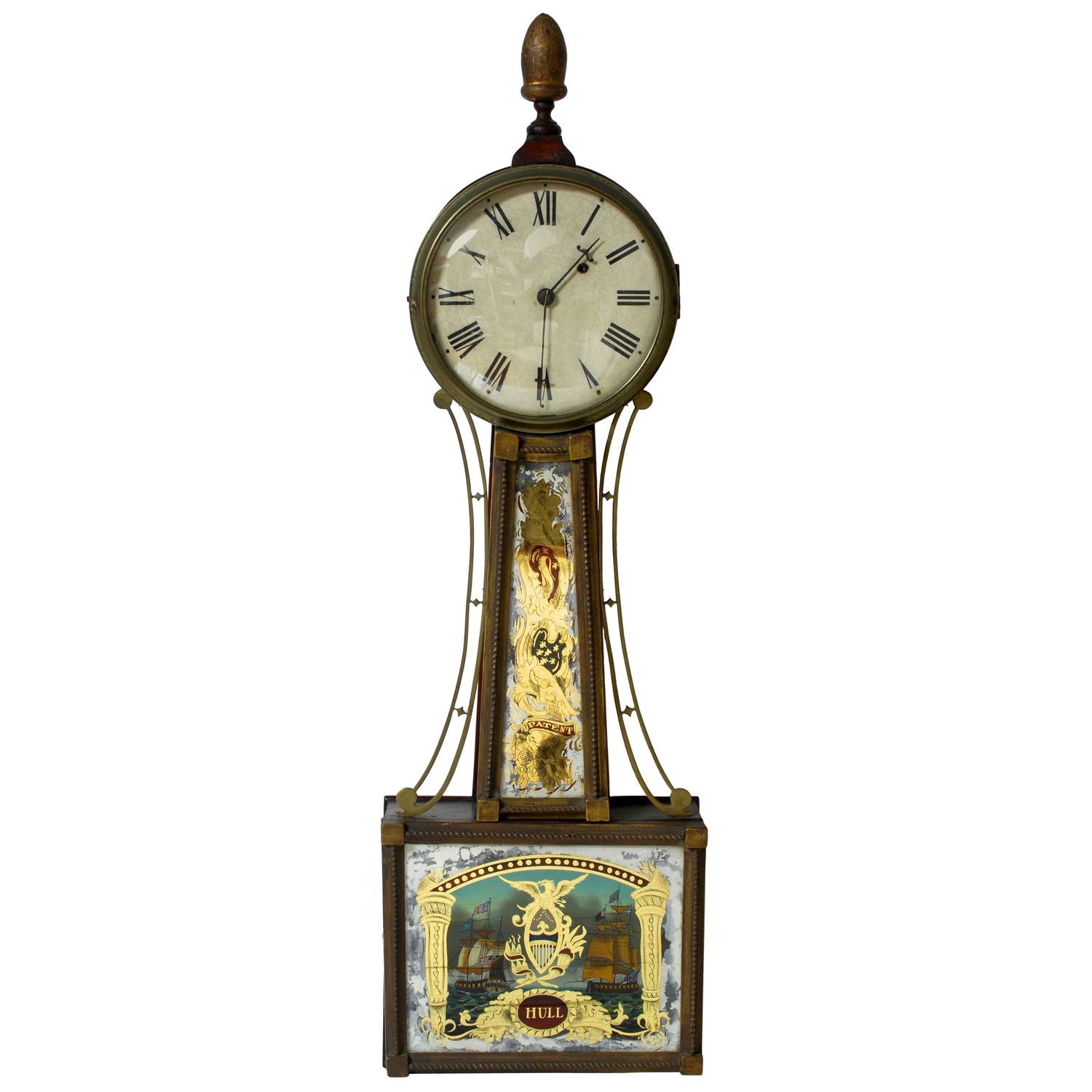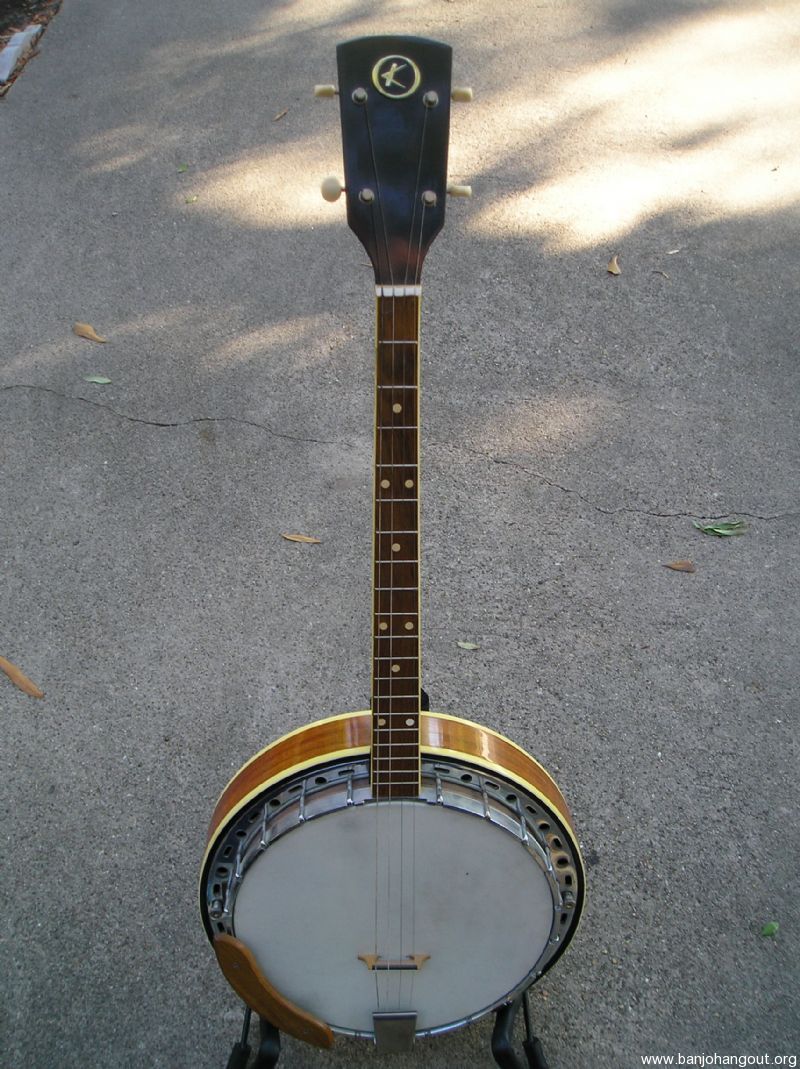When my father-in-law's father passed, he left his banjo to my brother-in-law. I was just over there for dinner the other day - and now that I actually play, it piqued my interest and asked to take some photos of it. They don't know anything about it, other than that it's a tenor from the 1920's ish. This 1800s wall clock resembles the shape of a banjo. At the top is a large clock face that is topped with a brass eagle. This is attached to a long wooden body that connects to a base that displays a country farm painting. Ornate Mantel Clock. Its owner brought it in to see if it could be spruced-up for a family member who wanted to start playing banjo. As-is, its neck was warped beyond the ability of a fret level/dress to solve, the friction pegs on it were tired and worn-out, and it really needed a synthetic head mounted to keep it stable enough for a new player to learn on. Many have no identification at all. Most have the patented L&H tailpiece shown in the inset. These shoes are shown in an 1890s Washburn banjo catalog, on low end models with simple peghead shapes. Many seen have no identification at all. Also, the tailpiece on this banjo is a patent assigned to Lyon & Healy, further suggesting them as the makers.
Identifying Unmarked Banjos

Many banjo manufacturers, in addition to making banjos under their own names, made unmarked banjos for others to sell as well. In some cases, teachers would purchase these instruments and put their own names on them, but in many other cases they carry no identifying name at all. It’s difficult to positively identify the manufacturer of these banjos in many cases, but some identify themselves through common hardware and design characteristics. Another useful set of identifying characteristics can be found at http://www.mugwumps.com.
Buckbee (1861-1897) banjos can frequently be identified by their peghead shape. Banjos with pegheads like that shown in the first picture below are usually made by Buckbee.
Vintage Banjo Identification Numbers


Rettberg & Lange (1898-1920) banjos were initially similar to Buckbee-made banjos, not surprising since they bought out the Buckbee factory in 1898. Most of their later banjos had elite tailpieces, Orpheum-like hardware, and long, thin heel footprints as shown below in the second row of pictures:
Vintage Banjo Identification Guide
J. B. Schall (1878-1907) manufactured many unmarked banjos for teachers who sold them to students, some of which are tagged with the name of the teacher or distributor. Schall hardware is pretty unique and the fifth string peg perch is typically carved out from the side of the neck as shown in the third row of pictures below:
Lyon & Healy (1864-1940) made many grades of banjos in many styles, and many were left unmarked. Lyon & Healy routinely used talon or patent 1897 tailpieces (see fourth row of pictures below) on many of their unmarked banjos, and their better-grade offerings frequently had notched, rather than grooved stretcher bands even in the early 1890’s. The Lyon & Healy peghead shape used on most of their better banjos is also distinctive, with a small additional bump on either side of the top of the peghead (see last set of pictures below).
.